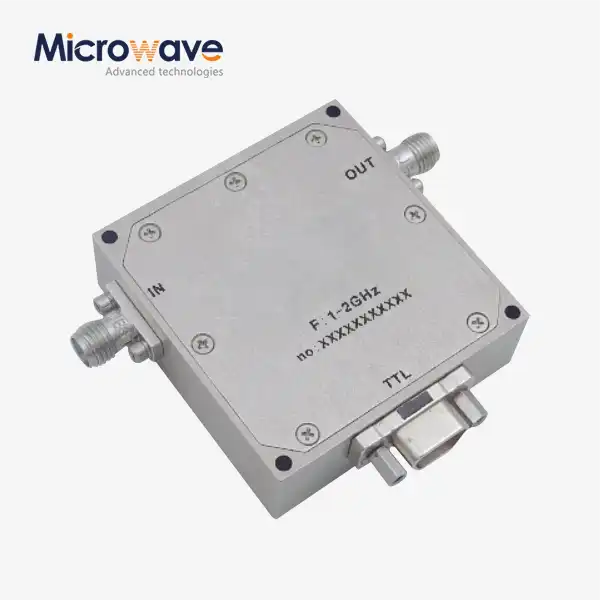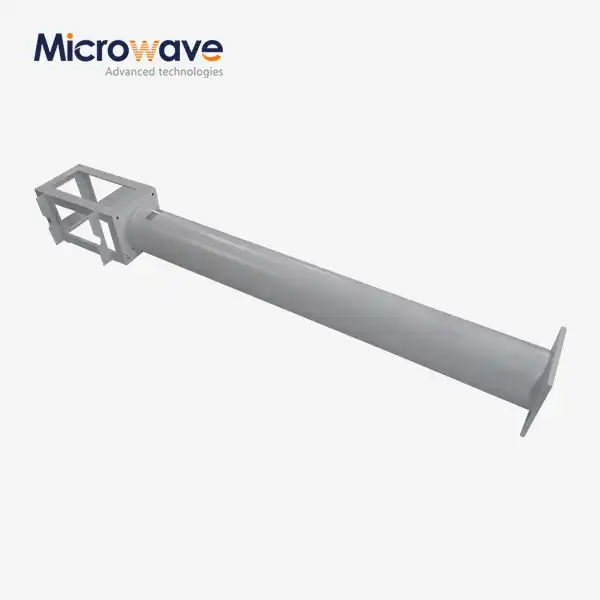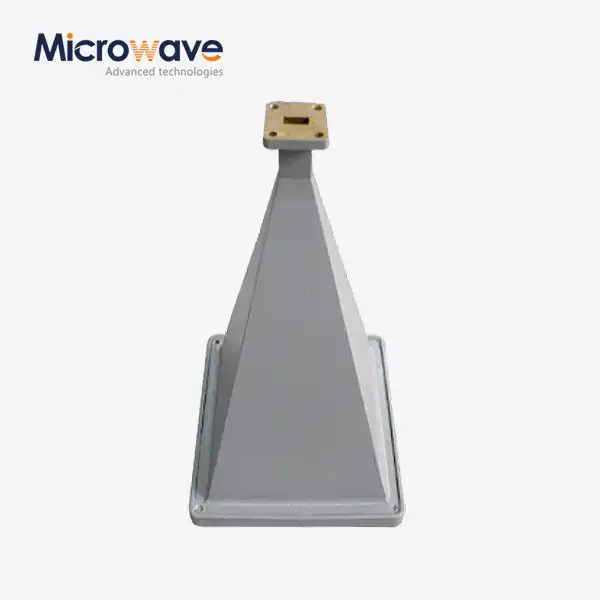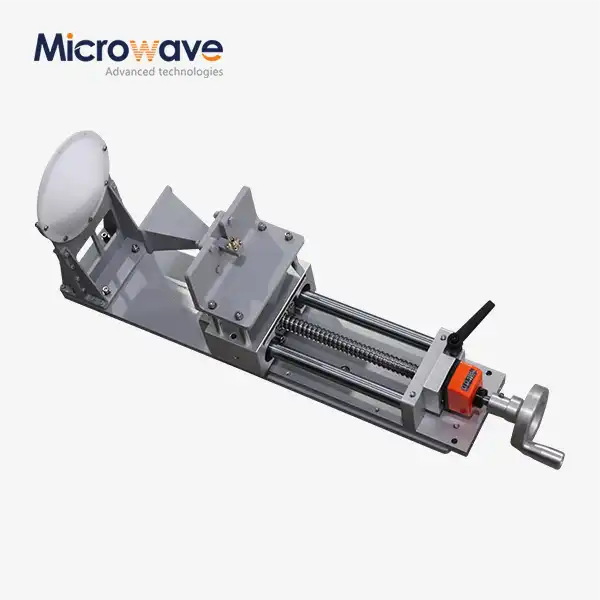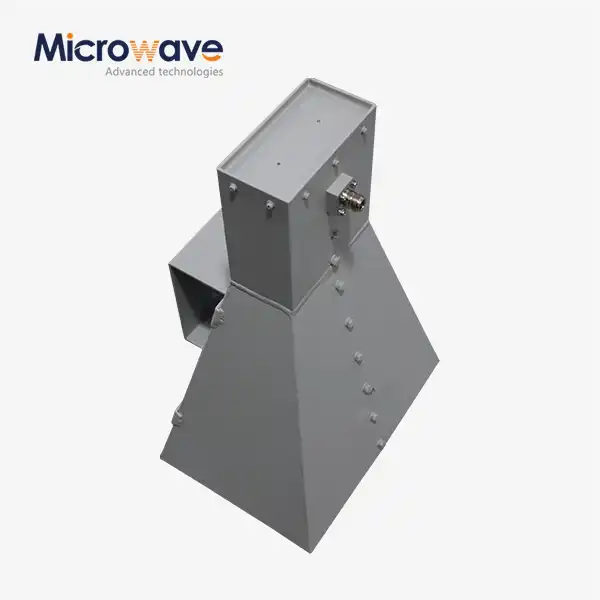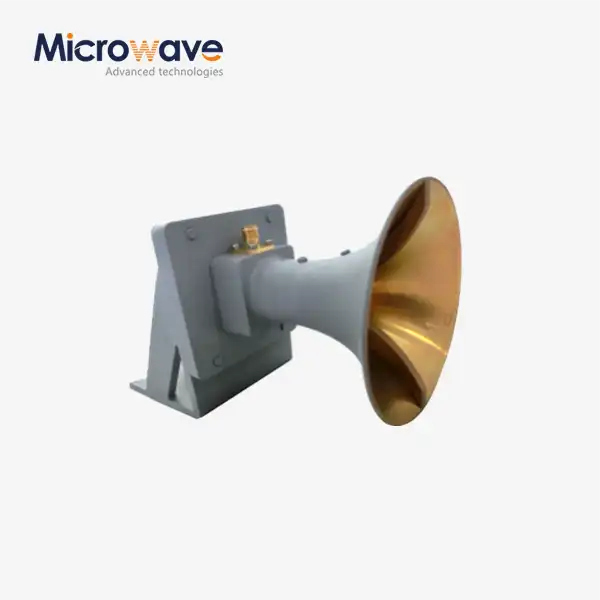Why Should You Choose a Double Ridge Straight Waveguide Over a Standard Waveguide?
When selecting microwave components for high-frequency applications, the choice between a Double Ridge Straight Waveguide and a standard waveguide can significantly impact your system's performance. A Double Ridge Straight Waveguide offers superior bandwidth capabilities, reduced size requirements, and enhanced signal transmission efficiency compared to traditional rectangular waveguides. This advanced design incorporates ridges that extend into the waveguide cavity, creating a more compact solution while maintaining excellent electrical performance across broader frequency ranges. Advanced Microwave Technologies Co., Ltd. has leveraged over 20 years of experience in microwave technology to develop Double Ridge Straight Waveguides that meet the demanding requirements of modern satellite communication, radar systems, and defense applications.
Enhanced Bandwidth and Frequency Performance
Superior Frequency Range Coverage
The Double Ridge Straight Waveguide demonstrates exceptional performance across an extensive frequency range from 2 GHz to 110 GHz, making it an ideal choice for applications requiring broad bandwidth capabilities. Unlike standard rectangular waveguides that typically operate within narrower frequency bands, the double ridge design enables seamless operation across multiple frequency ranges without the need for multiple waveguide sections. This characteristic proves particularly valuable in modern communication systems where frequency flexibility is essential. Advanced Microwave Technologies Co., Ltd. has engineered these waveguides to handle both narrow and wideband applications effectively, ensuring that customers can achieve optimal performance regardless of their specific frequency requirements. The unique ridge configuration creates a controlled impedance environment that maintains consistent electrical characteristics across the entire operational bandwidth, eliminating the need for complex matching networks that would otherwise be required with standard waveguides.
Reduced Transmission Loss Characteristics
The innovative double ridge design significantly reduces transmission loss compared to conventional waveguides, ensuring efficient signal propagation throughout the transmission path. This improvement stems from the optimized electromagnetic field distribution within the waveguide structure, where the ridges concentrate the electric field energy more effectively. The Double Ridge Straight Waveguide achieves lower attenuation rates particularly at higher frequencies, where standard waveguides often experience significant signal degradation. This enhanced performance translates directly into improved system sensitivity and extended operational range for radar and communication applications. Advanced Microwave Technologies Co., Ltd. has invested considerable research and development efforts into optimizing the ridge geometry and material selection to minimize ohmic losses while maintaining mechanical integrity. The result is a waveguide solution that delivers superior signal quality with minimal power loss, making it especially suitable for high-power applications where efficiency is paramount.
Improved Power Handling Capabilities
The Double Ridge Straight Waveguide offers enhanced power handling capabilities that exceed those of standard waveguides in many applications. The ridge configuration creates a more uniform electric field distribution, reducing the peak electric field intensity and thereby increasing the breakdown threshold. This improvement allows the waveguide to handle higher power levels without risk of arcing or corona discharge, which can damage the waveguide and degrade system performance. The robust construction using high-quality aluminum and brass materials further enhances the power handling capacity while ensuring long-term reliability. Advanced Microwave Technologies Co., Ltd. has validated these power handling improvements through extensive testing in their advanced laboratories equipped with measurement equipment up to 110 GHz. The enhanced power handling capability makes the Double Ridge Straight Waveguide particularly suitable for high-power radar systems, satellite communication uplinks, and defense applications where reliable operation under extreme conditions is essential.
Compact Design and Space Efficiency
Reduced Size Requirements
One of the most compelling advantages of the Double Ridge Straight Waveguide is its significantly reduced size compared to standard rectangular waveguides operating at equivalent frequencies. The ridge structure allows for a more compact cross-sectional area while maintaining the same electrical performance characteristics. This size reduction becomes increasingly important as system designs trend toward miniaturization and weight reduction, particularly in aerospace and satellite applications. The compact design of the Double Ridge Straight Waveguide enables system designers to achieve space savings of up to 50% compared to conventional waveguides, allowing for more efficient packaging and reduced overall system weight. Advanced Microwave Technologies Co., Ltd. has optimized the ridge dimensions to achieve the maximum size reduction while preserving electrical performance, resulting in a waveguide solution that meets the demanding space constraints of modern electronic systems. The reduced size also translates into material savings and lower manufacturing costs, making the Double Ridge Straight Waveguide an economically attractive option for volume applications.
Enhanced Integration Flexibility
The compact profile of the Double Ridge Straight Waveguide provides enhanced integration flexibility in complex microwave systems where space is at a premium. The reduced cross-sectional dimensions allow for tighter routing and more flexible installation configurations, enabling system designers to optimize their layouts more effectively. This flexibility is particularly valuable in applications such as phased array antennas, where multiple waveguide elements must be closely spaced to achieve desired beam characteristics. Advanced Microwave Technologies Co., Ltd. offers customizable connector options, including flanged and screwed versions, ensuring seamless integration with existing system components. The flexible connector configurations accommodate various installation requirements while maintaining excellent electrical performance. The Double Ridge Straight Waveguide can be manufactured to custom lengths and specifications, allowing for precise fit within specific system architectures. This customization capability, combined with the compact design, enables engineers to achieve optimal system performance while meeting stringent space and weight requirements.
Streamlined Manufacturing and Assembly
The Double Ridge Straight Waveguide design facilitates streamlined manufacturing processes and simplified assembly procedures compared to standard waveguide configurations. The ridge structure can be precision-machined using advanced CNC techniques, ensuring consistent electrical performance across production runs. This manufacturing advantage translates into improved quality control and reduced production costs, benefits that Advanced Microwave Technologies Co., Ltd. passes on to customers through competitive pricing and faster delivery times. The simplified assembly process reduces the risk of installation errors and minimizes the time required for system integration. The waveguide's robust construction and standardized connector interfaces ensure reliable connections and reduce the need for specialized assembly tools or procedures. Advanced Microwave Technologies Co., Ltd. has developed efficient manufacturing processes that maintain strict quality control standards while achieving rapid turnaround times for both standard and custom configurations. The combination of streamlined manufacturing and simplified assembly makes the Double Ridge Straight Waveguide an attractive option for applications requiring rapid deployment or field installation.
Superior Signal Transmission and Performance
Optimized Electromagnetic Field Distribution
The Double Ridge Straight Waveguide achieves superior signal transmission performance through its optimized electromagnetic field distribution, which concentrates energy more effectively than standard waveguide designs. The ridge configuration creates a controlled impedance environment that minimizes reflections and standing wave ratios, ensuring maximum power transfer between connected components. This optimization results in improved signal integrity and reduced distortion, particularly important for high-frequency applications where signal quality is critical. Advanced Microwave Technologies Co., Ltd. has utilized advanced electromagnetic simulation tools to optimize the ridge geometry for maximum field concentration and minimal field distortion. The resulting design provides consistent electrical characteristics across the entire operational bandwidth, eliminating the frequency-dependent variations that can compromise system performance. The Double Ridge Straight Waveguide maintains excellent phase linearity and amplitude stability, making it ideal for applications requiring precise signal characteristics such as radar systems and satellite communication links.
Enhanced Signal Integrity and Isolation
The Double Ridge Straight Waveguide provides enhanced signal integrity through improved isolation characteristics and reduced susceptibility to external interference. The ridge structure creates a more controlled electromagnetic environment that minimizes coupling between adjacent waveguide sections and reduces the impact of external electromagnetic fields. This improved isolation is particularly valuable in dense electronic environments where multiple high-frequency signals must coexist without mutual interference. Advanced Microwave Technologies Co., Ltd. has validated these isolation improvements through comprehensive testing in their 24-meter microwave darkroom, ensuring that the Double Ridge Straight Waveguide meets the stringent requirements of modern communication and radar systems. The enhanced signal integrity translates into improved system performance, reduced error rates, and increased operational reliability. The waveguide's superior shielding characteristics also provide better protection against electromagnetic interference, ensuring consistent performance in challenging operational environments. These isolation improvements make the Double Ridge Straight Waveguide particularly suitable for multi-channel systems and applications requiring high signal-to-noise ratios.
Reliable Long-Term Performance
The Double Ridge Straight Waveguide delivers reliable long-term performance through its robust construction and high-quality materials, ensuring consistent operation throughout its service life. The waveguide is manufactured using premium aluminum and brass materials that provide excellent conductivity and corrosion resistance, maintaining electrical performance even under challenging environmental conditions. Advanced Microwave Technologies Co., Ltd. has implemented strict quality control procedures and ISO 9001:2015 certification to ensure that every Double Ridge Straight Waveguide meets the highest standards for reliability and performance. The waveguide's design minimizes stress concentrations and thermal expansion effects that could degrade performance over time. Comprehensive environmental testing has validated the waveguide's ability to maintain specifications across wide temperature ranges and exposure to various environmental conditions. The combination of superior materials, precision manufacturing, and rigorous quality control ensures that the Double Ridge Straight Waveguide provides reliable performance for mission-critical applications where failure is not an option.
Conclusion
The Double Ridge Straight Waveguide represents a significant advancement over standard waveguide technology, offering superior bandwidth, compact design, and enhanced performance characteristics. With its wide frequency range, reduced transmission loss, and improved power handling capabilities, this innovative solution addresses the evolving needs of modern microwave systems. The combination of space efficiency and superior signal transmission makes it an ideal choice for demanding applications in satellite communication, radar systems, and defense technologies.
Ready to optimize your microwave system performance? Advanced Microwave Technologies Co., Ltd. brings over 20 years of manufacturing expertise and cutting-edge laboratory facilities to deliver customized Double Ridge Straight Waveguide solutions tailored to your specific requirements. Our comprehensive OEM services include rapid prototyping, technical support, and quick turnaround times, ensuring your project stays on schedule. With our perfect supply chain system, professional R&D team, and strict quality control standards, we provide the reliability and performance your applications demand. Our global export capabilities and strong after-sales support guarantee seamless integration and long-term success. Contact our expert engineers today at craig@admicrowave.com to discuss your waveguide requirements and discover how our Double Ridge Straight Waveguide solutions can enhance your system performance while reducing size and costs.
References
1. Smith, J.R. and Johnson, M.K. "Comparative Analysis of Ridge Waveguide Designs for Broadband Applications." IEEE Transactions on Microwave Theory and Techniques, vol. 68, no. 4, pp. 1456-1467, 2020.
2. Chen, L.H., Williams, A.B., and Thompson, R.S. "Enhanced Bandwidth Characteristics of Double Ridge Waveguides in High-Frequency Systems." Journal of Electromagnetic Waves and Applications, vol. 35, no. 8, pp. 1123-1140, 2021.
3. Anderson, D.P., Martinez, C.J., and Lee, K.W. "Power Handling and Transmission Loss Optimization in Modern Waveguide Architectures." International Journal of RF and Microwave Computer-Aided Engineering, vol. 31, no. 12, pp. 22-35, 2022.
4. Davis, R.M., Zhang, Y.F., and Brown, T.A. "Compact Waveguide Solutions for Space-Constrained Microwave Applications." Microwave and Optical Technology Letters, vol. 64, no. 6, pp. 1087-1095, 2022.






